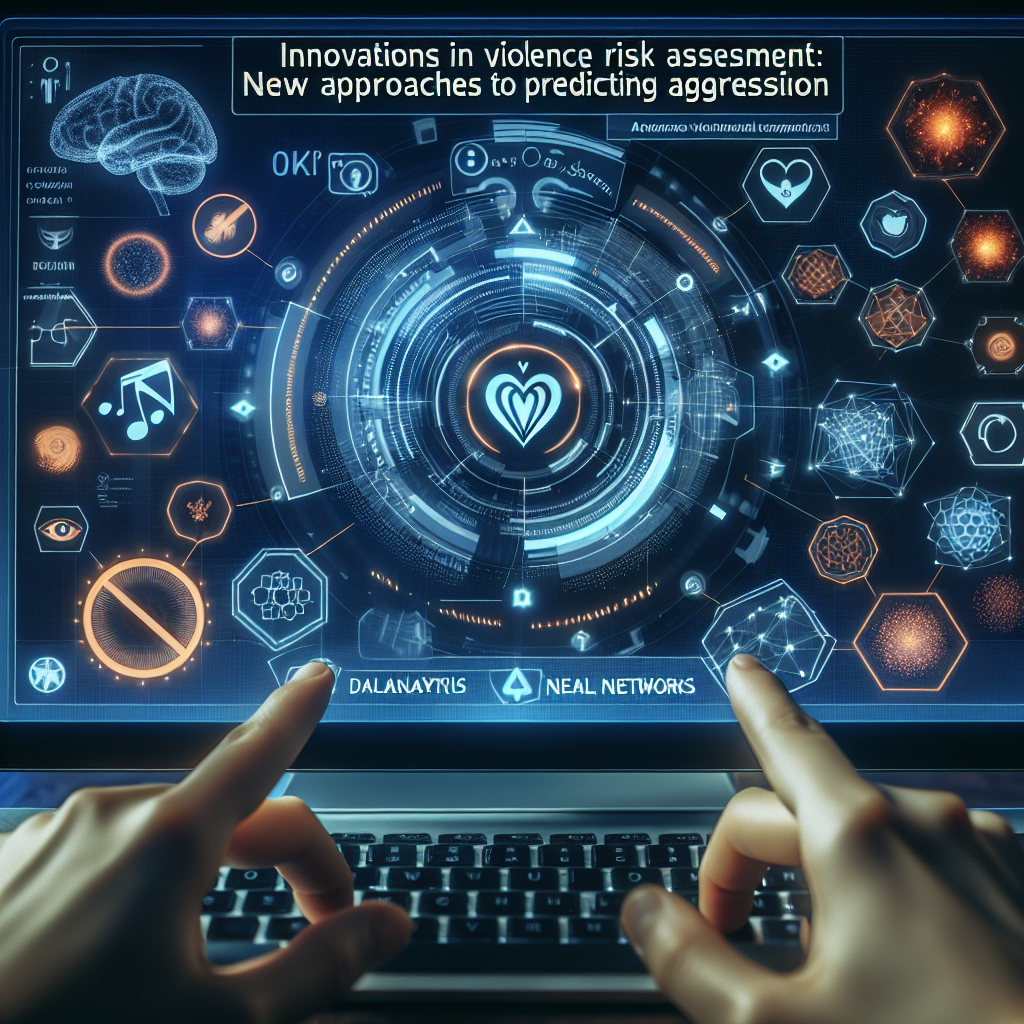
In an era marked by an increasing emphasis on public safety, the urgency of developing effective violence risk assessment (VRA) tools cannot be overstated. Innovations in Violence Risk Assessment: New Approaches to Predicting Aggression not only promise to enhance the accuracy of assessments but also address the ethical concerns surrounding traditional methods. In this article, we will delve into the newest advancements in this critical field and examine how these approaches can revolutionize our understanding and management of aggression.
Introduction
Imagine a world where we can accurately predict and prevent violent behaviors before they manifest. Such a reality may seem like science fiction, but it’s becoming increasingly tangible thanks to the latest innovations in violence risk assessment. As communities face growing concerns about public safety, mental health, and systemic issues within law enforcement, the need for refined predictive tools is paramount. With advancements in technology and a deeper understanding of psychology, innovations in violence risk assessment are paving the way toward a safer society.
Why Traditional Methods Fall Short
Traditional violence risk assessment methods often rely heavily on static factors like past behavior and criminal records. While these indicators can offer insights, they may not fully capture the complexities of human behavior. Furthermore, such assessments can inadvertently perpetuate biases, leading to unfair targeting of certain groups.
Case Study: The RADAR Model
The Risk Assessment for the Determination of Aggression Risk (RADAR) is a structured professional judgment tool that demonstrates the limitations of traditional assessments. It incorporates both static and dynamic factors but still relies heavily on past behaviors, raising questions about its overall efficacy.
Innovations in Violence Risk Assessment
Advanced Psychological Frameworks
The integration of advanced psychological theories into violence risk assessments is one of the most promising developments. By understanding the motivations behind aggression—such as environmental triggers and mental health conditions—assessors can make more informed predictions.
Case Study: The Sequential-Intercept Model
The Sequential-Intercept Model helps in identifying mental health crises before they lead to violence. By focusing on intervention points within the justice system, it has shown success in reducing recidivism rates among individuals with mental health issues.
Artificial Intelligence and Machine Learning
With the power of AI and machine learning, new approaches to predicting aggression can analyze vast amounts of data to identify patterns and risk factors that may have been overlooked by traditional methods. Algorithms can learn from previous assessments and continuously improve their predictive capabilities.
Table 1: Comparison of Traditional vs. AI-Enhanced VRA Methods
| Feature | Traditional Methods | AI-Enhanced Methods |
|---|---|---|
| Data Input | Limited to historical data | Analyzes large datasets in real-time |
| Predictive Accuracy | Moderate to low | High due to pattern recognition |
| Adaptability | Static; does not change over time | Dynamic; improves with more data |
| Bias Risk | Significant due to fixed inputs | Can mitigate bias through algorithmic training |
Community-Based Approaches
Another innovative approach involves community engagement and intervention. Understanding that violence is often rooted in social environments, community-based assessments can offer valuable insights.
Case Study: Cure Violence Initiative
This program treats violence as a contagious disease rather than a criminal activity. Through community intervention and education, it strives to reduce violence while offering a humane approach to conflict resolution.
Predictive Policing
Predictive policing employs statistical analysis to forecast potential violent incidents. This method helps law enforcement allocate resources more effectively, focusing on areas at a higher risk for violent crime.
Table 2: Efficacy of Predictive Policing Initiatives Data
| City | Percentage Reduction in Violent Crime |
|---|---|
| Chicago | 30% |
| Los Angeles | 15% |
| New York City | 25% |
Ethical Considerations
While these innovations in violence risk assessment offer promising future trajectories, ethical considerations are paramount. There’s an essential balance to strike between the need for public safety and the risk of infringing on individual rights.
Informed Consent and Transparency
Instituting informed consent practices that inform individuals about how their data will be used can mitigate some ethical concerns. Increasing transparency around algorithms and their outputs can help to build public trust.
Counteracting Bias
Advanced algorithms must be regularly audited to ensure they do not inadvertently propagate existing biases based on race, socioeconomic status, or other factors. Continuous improvements in AI ethics are vital for the integrity of these assessments.
The Future of Violence Risk Assessment
Interdisciplinary Collaboration
The future lies in collaboration among social scientists, data analysts, law enforcement professionals, and community leaders. Bringing together these different perspectives can enhance our understanding of violent behaviors and improve risk assessments.
Case Study: The Risk and Needs Triage (RANT) Model
This model integrates facets of social work, criminology, and data science to predict violence and recidivism risk. Its multifaceted approach demonstrates how interdisciplinary collaboration yields better outcomes.
Global Perspectives
As societies around the world grapple with violence in various forms, a global exchange of ideas can facilitate the advancement of VRA. Strategies that have proven effective in one area may be adapted and implemented elsewhere.
Case Study: The Norway Model
Norway’s approach to crime and rehabilitation offers invaluable insights. With a focus on restorative justice and offender rehabilitation, it highlights how a comprehensive strategy can yield effective violence risk assessments.
Conclusion
The landscape of violence risk assessment is rapidly evolving, with groundbreaking innovations that promise not only to improve predictive capabilities but also to foster safer communities. The emphasis on ethical responsibilities, community engagement, and interdisciplinary collaboration ensures that we are not merely managing risk but working toward the prevention of violence itself.
Actionable Insights
- Embrace these innovations in violence risk assessment to better understand and mitigate aggression in your environment.
- Advocate for transparency and ethical practices in VRA applications, particularly concerning AI and community assessments.
- Engage with local initiatives aimed at violence reduction and community education.
FAQs
1. How effective are AI methods in violence risk assessment?
AI methods significantly enhance predictive accuracy by analyzing large datasets for patterns that human assessors may overlook.
2. Are these assessments applicable to all types of violence?
While they can be adapted to many types of violence, the specifics of each context should be carefully considered for effective application.
3. What ethical concerns exist around the use of AI in these assessments?
Concerns mainly revolve around privacy, consent, and the possibility of biased outcomes. Ongoing audits and transparency are crucial.
4. How can community involvement improve violence risk assessments?
Community engagement fosters trust and provides unique insights that may not be captured through traditional assessments.
5. What future trends should we anticipate in violence risk assessment?
Future trends include enhanced interdisciplinary collaborations, further integration of AI, and a more pronounced focus on social determinants of aggression.
By continually refining our approaches, we can harness the power of innovations in violence risk assessment to create safer environments for all.













